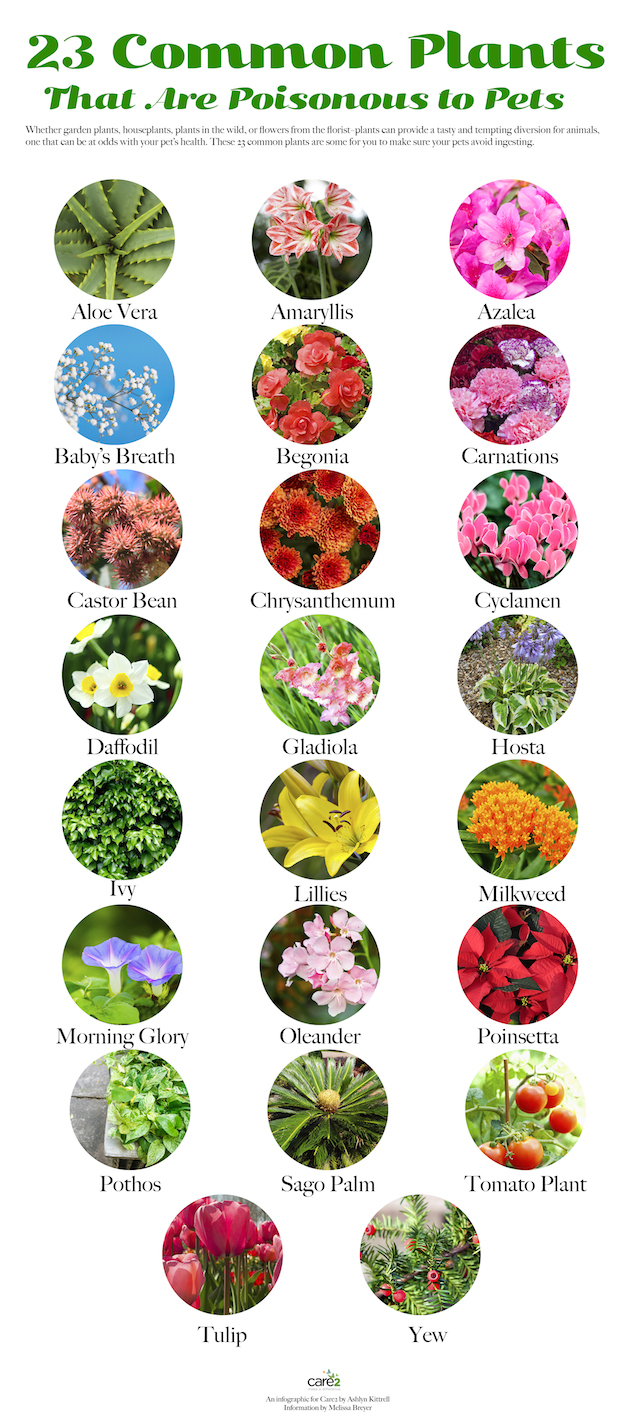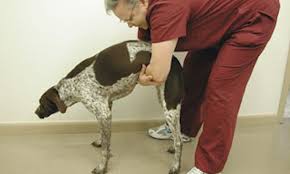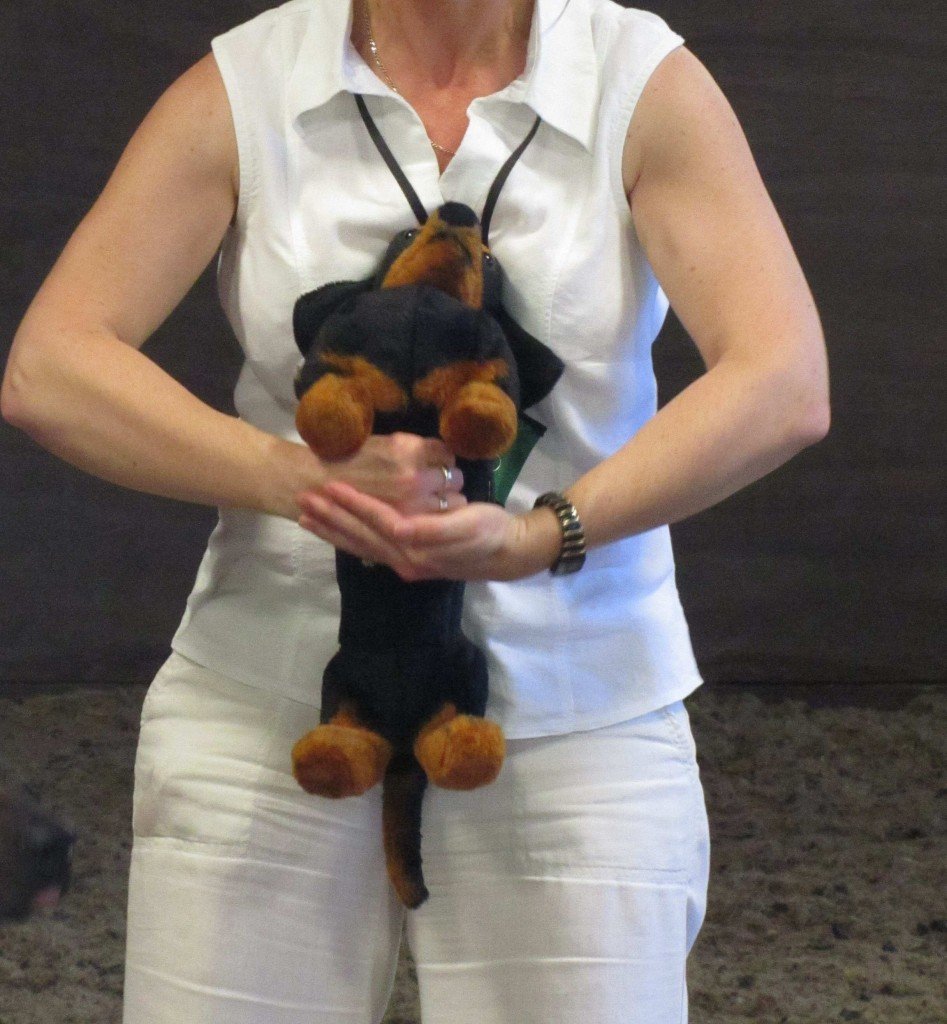Pet First Aid and Emergency Techniques
Feb 24, 2024 ComfortAtHomePetServices Pet Safety

As pet parents, we always want to keep our furbabies in the best health possible. There are many ways we can do this – regular wellness checks with a veterinarian, proper nutrition, positive modern scientific based training, exercise and routine grooming. Still, there is something we rarely think of until we need it – pet first aid and emergency care.
Unfortunately, often times it's in the middle of an emergency scare that we realize we don't know what to do. Yes, there is always Google or the phone, but when seconds count, it's best to have the knowledge readily available to you.
This article will be broken down into 3 sections: prevention, items all pet parents should have and emergency techniques. All first aid and emergency techniques are meant to stabilize your pet in case of an emergency. It is in no way a substitute for emergency veterinarian care. Stabilize your pet and then continue to seek treatment with your pet's veterinarian.
To begin, let's go over a few things that can be done to prevent an emergency from ever happening. An ounce of prevention is worth a pound of cure:
*Keep all human medications out of the reach of pets – work on the “leave it” command will also help in case something is dropped on the floor
*Keep all dangerous foods (chocolate, raisins, and grapes, sugar free candy and gum) out of the reach of pets
*Pick up all small pieces of toys, yarn, string, balloons or ribbons that could be a choking hazard
* Make sure pet toys are size appropriate, no small balls for large pets and make sure large dogs aren't getting into cat toys
*Wrap up or hide all electrical cords that could be chewed on or scratched
* If your pet is allowed in the garage, storage area or laundry room, or your cat comes through any of those, make sure they can't tip over any paint cans, chemicals and there isn't any antifreeze on the garage floor.
*Bags can suffocate pets! Always throw away all empty chip, food, cereal or pet food bags immediately and don't leave them lying around for your pet to get into. If you don't have a lid on your trash can, or if your pet opens the lid to get into the trash, cut all chip, dog food bag, any kind plastic bags before throwing them away! Cut the side and the bottom of the bag, so it looks like one flat piece. For information visit Prevent Pet Suffocation
*Metal cans and jars are also a suffocation hazard. A cat or small dog may try to put their head in to lick the leftovers and become stuck. Rinse out and dispose of all cans and jars in a closed trash can or closed recycle bin.
*Use caution when allowing pets out in temperatures below 25 degrees or above 85 degrees to minimize the chances of frostbite, hypothermia, heat exhaustion and burnt paws
*Be aware of which household plants are poisonous to your pets and keep them out of reach! These plants include, but are not limited to, azalea, lilies, mistletoe, Poinsettia and philodendron. If your cat is a climber or plant chewer, it may be best to limit these indoor plants altogether. Watch your dog carefully while playing outside, as azalea is a very popular outdoor bush.
Common Plants That Are Poisonous to Pets
- Amaryllis
- Andromeda
- Arrow Grass
- Azalea
- Bittersweet
- Boxwood
- Buttercup
- Caladium
- Chokecherry
- Climbing Lily
- Crown of Thorns
- Daffodil Bulbs
- English lvy
- Elderberry
- Fox Glove
- Fox Tail
- Holly
- Hyacinth
- Hydrangea
- lris
- Japanese Yew
- Jasmine Berries
- Marigold
- Mistletoe
- Narcissus
- Nightshade
- Oleander
- Peach
- Philodendron
- Poison ivy
- Poinsettias
- Rhododendron
- Rhubarb
- Tobacco
- Tulip Bulbs
- Walnut
- Wisteria
- Yew
Common Household Products That Are Poisonous to Pets
- Acetaminophen
- Aftershave
- Antifreeze
- Aspirin
- Bleach
- Boric Acid
- Brake Fluid
- Carburetor Cleaner
- Cleaning Fluid
- Deodorants
- Deodorizers
- Detergents
- Disinfectants
- Drain Cleaner
- Dye
- Fungicides
- Furniture Polish
- Gasoline
- Hair Dye
- Herbicides
- Insecticides
- Laxatives
- Mothballs
- Rat Poison
- Snail & Slug Bait
- Xylitol (in many sugar free foods)
Not all accidents or illnesses are emergencies, and some will only require basic first aid. In those cases, you will need to know what items all pet parents should have readily available and why they're important.
A pet first aid kit:
- Flexible pet bandage for wrapping a wound, abrasions, cuts
- Cloth medical tape to adhere gauze to minor abrasions or wounds
- Antiseptic ointments and wipes to clean the wound
- Gauze/maxi pads to stop bleeding and cover an open wound and absorb blood
- Tick key/tick remover/tick twist for tick removal
- Hydrogen peroxide as an antiseptic and to induce vomiting in the event your pet has gotten into something potentially toxic
- Flashlight to look into throat, or get a better look at any injury for debris or remnants or objects in a wound
- Latex/rubber gloves to reduce infection risks
- Instant ice pack for minor strains or swelling
- Digital Thermometer to take your pet's temperature. Normal temp for dogs and cats: 100.4-102.5
- Syringes to administrator medications or flush wounds
- Scissors with blunt ends to cut medical tape/gauze or trim hair away from wound
- Precid or flomodimide for upset stomach, heartburn, nausea, indigestion
- Benadryl/Antihistamine (liquid gel tabs – pop with safety pin and squirt into pet's mouth) for allergies or minor allergic reactions
- Rubbing alcohol/alcohol pads to clean the wounds
- Tweezers to pull debris out of wounds, jaggers, splinters, bee stingers
- A large soup spoon to remove something lodged into a pet's throat
- Long needle nose pliers to grab an object out of the mouth
- Gas X for gassy stomach, bloat and indigestion
- Styptic power (flour or corn scratch works in a pinch) to stop minor bleeding
- Vaseline to cover the wound or lubricate a thermometer, if your dog has digested something nontoxic but is at risk of the object getting stuck, administer Vaseline to help lubricate digestive tract to help expel object easily
- Plastic bags to collect samples of vomit or feces
- Vinegar or baking soda for neutralizing burns caused by acids
- Coconut oil for joint, antiseptic and topical healer – cuts and abrasions, skin and coat
- Turmeric for joint health and inflammation
- Milk thistle to cleanse kidneys and liver
- Yogurt for upset stomach, helps with diarrhea
- Pumpkin regulates the digestive system and can be used for upset stomach, constipation and diarrhea
- Fish oil for Omega properties and to help with joint function, skin and coat
- Flour and corn scratch to help stop minor bleeding
If your pet is bleeding from a laceration or abrasion, place a clean piece of gauze over the wound and apply pressure to the bleeding site. If your pet is bleeding heavily or the blood is soaking the gauze, try using a sanitary napkin (maxi pad), elevate the area if possible. Don't disturb the wound by continuously lifting the gauze/sanitary napkin. Have a veterinarian assess your pet's wound as soon as possible, as this will increase the likelihood your pet's wound won't become infected or have other complications. If the wound is from a bite or scratch from another animal, make your veterinarian aware, as these types of wounds are very susceptible to infection.
If you suspect your pet has a fractured or broken bone, restrain and muzzle your pet. Your pet is in extreme pain and will act out much differently than normal, increasing your chances of being bitten.
- Immobilize the limb as it is found. Find something that will function as a splint such as a piece of wood, rolled up magazine or newspaper. Carefully place the splint under the injured limb.
- Begin applying the rolled gauze just above the injured joint and continue wrapping until splint is securely in place. ** Be careful not to wrap too tightly.
- Transport your pet to the nearest emergency room or veterinary clinic for immediate treatment
Our pets can also suffer from overheating, especially during the summer months or after an intense play session outdoors in the heat. If you notice your pet overheating, get them to a cool area with plenty of cool air circulation, air conditioner or even a fan. Wet your pet's neck, paws and groin area with cool, NOT COLD, water. Allow your pet to rest and provide them with small amounts of water – if they drink too much, too fast they will only vomit the water. Drinking too much, too fast can also cause bloat (gastric torsion).
As much as we try to keep our furbabies safe, there are some things out of our control. For those times, the best thing we can do for our pets is to remain calm and know basic emergency care techniques.
Assessing your pet's vital signs
Checking Pulse: The easiest and least invasive place to check a pulse on a pet is the femoral pulse, which is located on the inside of the thigh of the back legs. Move around fingers inside the upper thigh, feeling for a slight depression. Once you've located the pulse, use a watch to count the number of beats for six seconds, then add a zero to that number OR count the beats for 15 seconds and multiply by 4. The pulse rate for adult dogs is between 60-140 beats per minute. The pulse rate for cats can vary from 140-250 beats per minute.
Check breathing: You can visually or manually check your pet's breathing. Place your hand on the side of the chest or watch for the rise and fall of the chest; count the rises or the falls for 30 seconds and double to get breaths per minute. Your pet's breathing should be even, smooth and rhythmic while at rest. The breath rate for dogs is 10-30 breaths per minute. Cats can breathe at 20-30 breaths per minute.
Gum color: Gum color can assist you in determining the immediate underlying health issue of your pet. As a general rule: pale/white can mean anemia; yellow can indicate jaundice and a blue/gray color can indicate lack of oxygen in the cells. If your pet's gums are pale in color and the mouth and saliva is tacky, seek care IMMEDIATELY as this is a sign of dehydration
Heimlich maneuver for choking:
Step 1: If your pet is conscious, check the airway for obstructions and clear the airway of any debris. If the obstruction is at the back of the mouth, grasp the debris with your fingers or pliers and gently pull forward.
If you can't get the object out, continue to step 2.
Step 2 for large dog: Stand behind your dog, and make a fist with one hand, and place it against your dog's abdomen where the sternum ends. With the other hand, grasp your fist and push upward and forward. Do this thrusting motion four or five times. Check the dog's airway again and clear any debris.
Step 2 for a small dog: Hold the dog against you, so the dog's spine is against your chest. Use two fingers and place it against your dog's abdomen just where the sternum ends. Use your two fingers to give four or five rapid thrusts inward and upward. Or place hands on each side of the chest and press inward to push the air up and out. Check the dog's airway again and clear any debris from the mouth.
Step 2 for cats: Lay the cat on their side, put one hand on their back and the hand on the cat's abdomen just below the ribs and give several sharp pushes in and up. If your cat won't lie still, you can pick the cat up and place his spine against your stomach and then give the several sharp pushes against the abdomen. Check the cat's airway again and clear any debris from the mouth. Thumb and forefingers on each side and squeezing right below the rib cage.
If you pet goes unconscious during the Heimlich, again attempt to remove object, start compressions. The object needs to be removed before rescue breathing can be attempted.

Rescue breathing
Check for heart beat and pulse. Check mouth and airway for any possible debris.
Check femoral pulse , inside of the thigh on either back thighs by sliding fingers in upper thigh to find pulse. Your pet's pulse should be 60-140 beats per minute. If your pet has a heartbeat but is not breathing, start rescue breathing techniques.
- Extend the head to open the airway
- Pull the tongue out past the canines, grasp the pet's snout firmly and compress the lips and mouth together holding the muzzle firmly shut
- Place your mouth and lips over the pet's nose making an airtight seal.
- Give the pet a breath over 1 second, taking care not to over ventilate. Watch for the chest to rise.
- Remove your mouth and watch for the fall of the chest. Continue delivering breaths. Each breath delivered over approximately 1 second. Reassess after one minute.

CPR: * performing CPR on an animal not in cardiac emergency can be dangerous and deadly to your pet.
If there is no response or breathing from your pet, give 30 rapid compressions, then pull the tongue out past the canines with your fingers. Firmly grasp the pet's snout and compress the mouth together, holding the muzzle firmly shut. Place your mouth and lips over the pet's nose making an airtight seal. Give the pet a breath over 1 second, taking care not to over ventilate. Watch for the chest to rise , Continue 30 rapid compressions and 2 breaths for 2 minutes. After 2 minutes, check pulse and reassess.
Step 2: CPR for Medium/Large Dogs 30 Pounds and over: Lay the dog on a flat surface with the dog's right side against the floor or table. Place one of your palms on the dog's rib cage, near the heart region, and put your other palm on top of it. Press the rib cage in a downward motion. Compress the chest one third to one half the width of the chest for a count of 30 rapid compressions.
Close the dog's mouth with your hands, putting your thumbs under the jaw and fingers around the muzzle. Give two breaths into the nose for every 30 compressions. Continue performing CPR and rescue breaths until the dog begins to breathe and has a steady pulse.

Step 2: CPR for Puppies and Dogs Less Than 30 Pounds: Lay the dog on a flat surface with the dog's right side against the floor or table. Cup your palms and hold the dog with one palm on either side above the heart region. Compress the chest one third to one half the width of the chest for a count of 30 rapid compressions. Close the dog's mouth with your hands, putting your thumbs under the jaw and fingers around the muzzle. Give two breaths into the nose for every 30 compressions. Continue performing CPR and rescue breaths until the dog begins to breathe and has a steady pulse.
Step 2 for Cats: Lay your cat on his right side on a flat surface. Place your thumb and fingers from one hand on either side of his chest, behind his elbows, and give a quick squeeze to compress the chest to about half of its normal thickness. Compress the chest about 15 times every 10 seconds; give a breath about every 30 compressions.
**For toy breeds, small cats, and kittens and puppies, use the taco technique - pick your pet up like a taco, with fingers on their back and thumb on their front and squeeze. Do NOT squeeze too hard, small or young pets are fragile, and can get broken ribs by over-squeezing.
As fellow pet parents, we hope you never need to utilize these emergency techniques, but if the need should arise, we want your fur baby to stand the best chance of recovery. As stated above, the information shared is to stabilize your pet and allow you time to seek veterinary care. Our information is for education purposes and isn't meant to substitute regular veterinary care for your pet.
For more information, or to attend a class on pet first aid visit Pet Tech, Pet CPR and First Aid
Emergency Contacts
Poison Control
ASPCA Animal Poison Control Center
1-888-426-4435
$65 Credit Card Charge
www.aspca.org
Pet Poison Helpline
1-800-213-6680
$49 Credit Card Charge
www.petpoisonhelpline.com
Emergency Vets
Pittsburgh Veterinary Specialty & Emergency Center (PVSEC) 24/7/365
807 Camp Horne Road
Pittsburgh, PA 15237
412-366-3400
VCA Castle Shannon Animal Hospital 24/7/365
3610 Library Road
Pittsburgh, PA 15234
412-265-4264
Allegheny Veterinary Emergency Trauma & Specialty (AVETS) 24/7/365
4224 Northern Pike
Monroeville, PA 15146
412-373-4200
Northview Animal Hospital 24/7/365
223 Seibert Road
Pittsburgh, PA 15237
412-364-5353
University Veterinary Specialists 24/7/365
2810 Washington Road
McMurray, PA 15317
724-717-2273



















